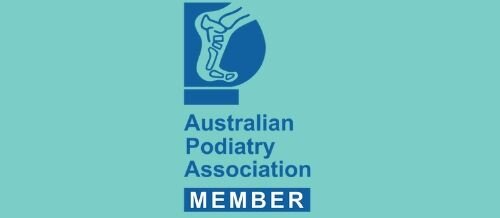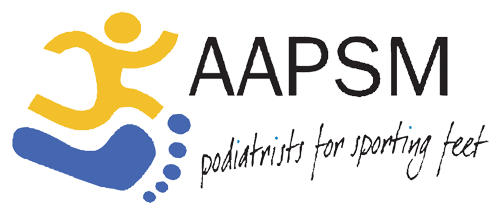Sever’s Disease
If your child is suffering from heel pain, it could be as a result of Sever’s Disease.
Gold Coast Foot Centres are experts in treating such a condition. So, please contact us immediately if they are experiencing pain or discomfort.
What is Sever's disease?
Sever's disease is a frequent cause of heel pain in teenagers and children.
Referred to medically as calcaneal apophysitis, it occurs when the growth plate within the heel becomes inflamed.
Growth plates comprise areas of cartilage that are most commonly found around the ends of your bones. They signify new bone growth in young people and eventually close to form a solid bone when their bodies fully develop.
However, as they are not as robust as your other bones, they have the potential to damage or become injured a lot more easily.
While Sever's disease occurs predominantly in children aged 8 to 12, it can manifest in adolescents between the ages of 16 and 17 years old.
Although the condition might be painful and discomforting, once the growth plate has solidified and, therefore, stopped growing, your child or teenager won’t be afflicted by the condition again.
What Are the Causes of Server’s Disease?
Sever's disease results from repetitive stress being placed on the heel.
It occurs when a young person’s Achilles tendon (a band of tissue that links your heel bone and calf muscles) tightens and pulls on the heel bone due to repetitive usage or stress.
This activity aggravates the growth plate, which, in turn, causes inflammation and pain.
Who is Most at Risk of Suffering from Sever’s Disease?
This condition is often triggered by growth spurts that children go through because, at this time, their tendons, muscles, and bones change very quickly.
Young people who play a lot of sports or are generally quite active can also be at risk of developing it. Especially if they regularly participate in jumping or high-impact sports or running on hard or track surfaces.
Generally, this condition is more common in boys than girls and can be prevalent among those who often wear shoes that are poorly fitting with minimal support.
What Are the Main Symptoms of Sever’s Disease?
There are several symptoms associated with Sever’s Disease that you should look out for in young people.
The one they most frequently complain about is soreness or pain around the back of either or both of their heels. Often, this results in them limping or tiptoeing, particularly after running.
Reddening of the heels and becoming mildly swollen are other symptoms to look out for.
How Do Podiatrists Diagnose Sever’s Disease?
While you might recognise the symptoms, Sever’s Disease can only be truly diagnosed by a clinical assessment performed by a trained podiatrist.
At Gold Coasts Centres, our expert team are usually able to diagnose the condition based on a visual and physical examination of your child’s heel. They’ll also ask a series of questions relating to the sports or activities they have been performing.
Unless they suspect a bone has been fractured or broken, they are unlikely to do an X-ray of the heel.
How Do You Treat Sever’s Disease?
Sometimes, the pain or discomfort your child is experiencing will significantly reduce if they refrain from playing sports or doing the physical activities that triggered the condition.
Your child may also find it beneficial to apply ice packs to their heel at 10-to-15-minute intervals before and after running around or participating in sporting activities, as this should reduce their suffering. It might also help them to massage or stretch their calf muscles at least twice a day.
How Can Our Expert Podiatrists Help?
If your child is afflicted with Sever’s Disease, our Gold Coast podiatrists can help them lessen the effect of the malaise.
They can do this by directly identifying and addressing the factors that cause aches and pains in their heels, along with other gait issues that might contribute.
One of the main ways our podiatrists can help is by offering advice on the proper footwear that should be adopted for certain sports and making in-shoe modifications based on customised orthotics.
Through their expertise, they will be able to create something that offers them a better foot posture, reduces their levels of discomfort, and reduces the likelihood of them experiencing pain moving forward.
How Can Sever’s Disease Be Prevented?
If your child is experiencing painful issues with one of both of their heels, please book an appointment with Gold Coast Foot Centres immediately.
We have several practices all over the Gold Coast, so our expert podiatrists should be able to see them very quickly.
Schedule an Appointment
If you have plantar warts that won’t go away, please make an online booking with our expert podiatrists today.
Alternatively, contact your nearest Gold Coast Foot Centres practice.
FAQs
-
Sever’s Disease is a condition whose symptoms can ebb and flow, depending on the level of intensity involved in your child’s sporting or physical activity.
While the discomfort will go away in the short term if they take a break from it, the likelihood of it returning if they do not seek professional guidance from a podiatrist is high.
However, sometimes, it can last for as long as three months, or even more, if your child tries to play through the pain.
-
If your child is suffering from Sever’s Disease, it is best for them to avoid partaking in any kind of sports or activities that require jumping or running.
This is particularly prudent for those playing basketball, gymnastics, or track events on hard surfaces.
-
For children experiencing pain from Sever’s Disease, applying ice to the heel before and after playing sports can reduce their suffering.
They can also benefit from strengthening their tendons and leg muscles and stretching their calf muscles, while wearing heel cup inserts to cushion the heel could work, too.





